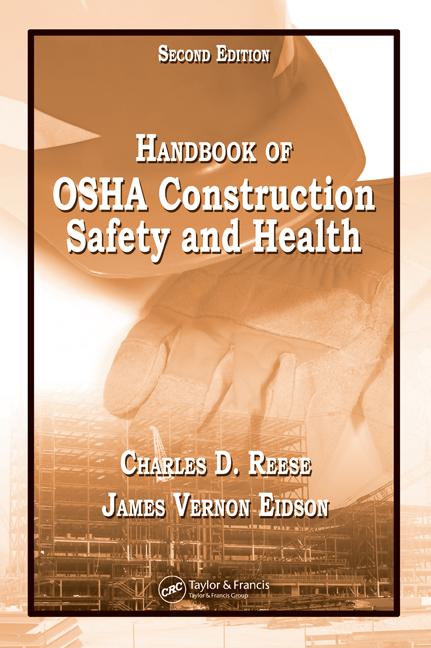OSHA Deputy Jordan Barab testified on VPP on Capitol Hill in June. He referred to an internal OSHA report on VPP that had been submitted to OSHA chief Dr. David Michaels in November, 2011. That internal document was just made public this week by OSHA, with no explanation for the nine-month gap between receiving the report and making it public.
The report recommends that OSHA overhaul its policies for responding to serious accidents at these sites. Regional officials should thoroughly re-evaluate sites that have such problems, the report said, and they should have broader authority to kick out problem workplaces. The agency also should suspend sites while investigations are ongoing, the report recommended, according to Bloomberg News.
"This report will serve as a valuable road map for the agency as we continue to address issues present in VPP," Barab said in a statement. "In general, we agree with most of the findings of the report, and have already or will be implementing a number of substantive changes to the program based on the recommendations included."
The task force, composed almost entirely of regional and local OSHA officials, identified muddled guidance, inaccurate data and regional inconsistencies that have led to problems within the program.
Executive Summary
The team found OSHA personnel to be dedicated to the Voluntary Protection Programs
(VPP) and committed to the belief that VPP is effective in improving safety and health
conditions at all participants’ workplaces. The team focused their activities on internal
controls, enhancements, program consistencies, enforcement activities at VPP sites, and
performance measures.
One of the most significant improvements the agency needs to make is to update the VPP manual to provide one source document for administering the VPP and also to ensure nationwide consistency. The following is a list of recommendations concerning the five areas addressed by the team:
The team found there are several internal controls that can be implemented to improve
administration of the program.
Internal Controls
1. Focus the Directorate of Cooperative and State Programs (DCSP) review on the technical details of the initial approval report and bring repeated problems to the attention of the appropriate Regional Administrator (RA).
2. Follow the guidance in the VPP manual to spot check reapprovals instead of reviewing all reapprovals.
3. Update the VPP manual to incorporate changes reflected in the various memoranda issued from 2009-2011; the “Revisions to the Voluntary Protection Programs to Provide Safe and Healthful Working Conditions,” published in Federal Register Notice 74 FR 927, January 9, 2009; and, recommendations adopted from this report.
4. Require National Office staff to participate periodically on audits of the VPP program in the regions. Consider allowing DCSP to participate on VPP participant onsite reviews.
The team found that there are several actions the agency can take to enhance the
administration of the VPP.
Enhancements
5. Ensure the VPP Automated Data System (VADS) is up-to-date and improve the timeliness and accuracy of the data by allowing regions to enter VPP data. Clarify how Corporate Program participants should be counted, track the date the regions send the report to the national office, and reflect the date approved for reapprovals as the date the RA signs the letter to the site.
6. Explore the feasibility of graduating VPP participants from the program.
7. Explore the feasibility of discontinuing the Corporate Program.
8. Discontinue the Merit Program.
9. Ensure OSHA VPP staff understands the time frame requirement for the first Mobile Workforce post-approval evaluation. Discuss further the feasibility of changing these time frames and provide more RA discretion in determining the time frames.
10. Consider allowing Special Government Employees (SGEs) to participate in non-traditional activities including annual report reviews, reviewing new applications and performing pre-audits at prospective VPP applicants’ sites.
11. Consider requiring participation in at least one onsite or other defined activity per year for SGEs currently on the active rolls.
12. Modify OSHA policy to allow VPP Program Managers (VPMs) and/or Team Leaders (TLs) to use as many SGEs as they determine necessary to complete the evaluation. Maintain a requirement for a minimum of one OSHA team leader on all onsite evaluations.
13. Improve the SGE application process and training program to ensure SGEs have the requisite knowledge, experience and ability to perform onsite evaluations.
14. Improve the SGE database to include SGE expertise; ensure the database is current.
15. Develop and implement OSHA policy for removal of SGEs and update the SGE manual.
16. Revise and improve the onsite evaluation report worksheet format to elicit better information on the eligibility of the applicant.
17. Determine if data can be provided through online reporting to eliminate duplication of data entry. Consider the use of an online tool for the participants to use when submitting the annual evaluation report.
18. Amend the current success story templates to include best practices and communicate the change to VPP participants.
19. Require sites to report and explain significant changes in the previous three years’ data in the annual evaluation. Consider additional modifications to the annual evaluation to improve its usefulness.
The team also found the aAgency has several areas that need to be addressed to ensure consistency in the administration of VPP.
Consistency issues
20. Ensure the regions understand the agency policy on incentive programs at VPP sites.
21. Revisit how the Process Safety Management (PSM) portion of the onsite evaluation is handled at VPP sites to determine the best method to obtain accurate PSM information including a review of the former system. Issue the Annual Self-Evaluation, PSM Supplement B timely to ensure participants have enough time to evaluate and answer the questions.
22. Require OSHA staff conducting recordkeeping reviews for VPP to receive recordkeeping audit training.
23. Consider implementing a requirement that participants conduct recordkeeping audits on a regular basis.
24. Ensure better communication, between the region and national office, of injury and illness data discrepancies found during the onsite evaluations. Ensure the Annual Submission spreadsheet is updated to contain the most up-to-date and accurate information.
25. Develop an appropriate plan to address regional inconsistencies identified through the survey.
26. Develop and implement a training plan for personnel designated or assigned to be TLs on VPP Evaluations.
27. Develop a VPP training course for new VPMs and TLs.
The team provided recommendations concerning actions the agency could take in response to enforcement activities at VPP sites.
Enforcement Activities
28. Allow the RA to propose termination for a VPP participant in cases where the RA believes employees’ safety and health are seriously endangered or that a lack of trust has occurred between VPP management and OSHA.
29. Include a Merit finding under Section 11(c) of the Act as a reason for automatic termination from VPP.
30. Rewrite the current guidance on procedures for regions to follow after a work-related fatality, catastrophe, or other significant enforcement activity. Require the region to conduct a thorough evaluation following such an event.
31. Allow Area Directors the authority to make a determination concerning initiating an enforcement action at a VPP site following a referral for a safety and health hazard the participant will not correct.
32. Continue to allow VPP participants to be exempt from programmed inspections even in industries where OSHA has a National Emphasis Program.
33. Develop a process after a work-related fatality or significant enforcement activity whereby a site is placed in an “Inactive” status pending completion of an investigation.
The team found the agency should explore additional lagging indicators, leading indicators, and outcome measures to expand measurement of program effectiveness.
Performance Measures
34. Create a team which includes OSHA, VPP stakeholders, and experts to identify effective lagging indicators, leading indicators, and outcome measures to track VPP performance.
Implementation
Finally, the team believes the recommendations in this report provide a road map for management to follow to enhance the administration of VPP. Many of the concerns
raised from various sources regarding VPP could be addressed through the adoption of
these recommendations. The team believes that the Directorate should develop a plan to
include an internal tracking mechanism to help facilitate that process.
The task force’s report is not the final look at VPP: The Department of Labor’s Office of Inspector General announced earlier this year that it would also look into the program


